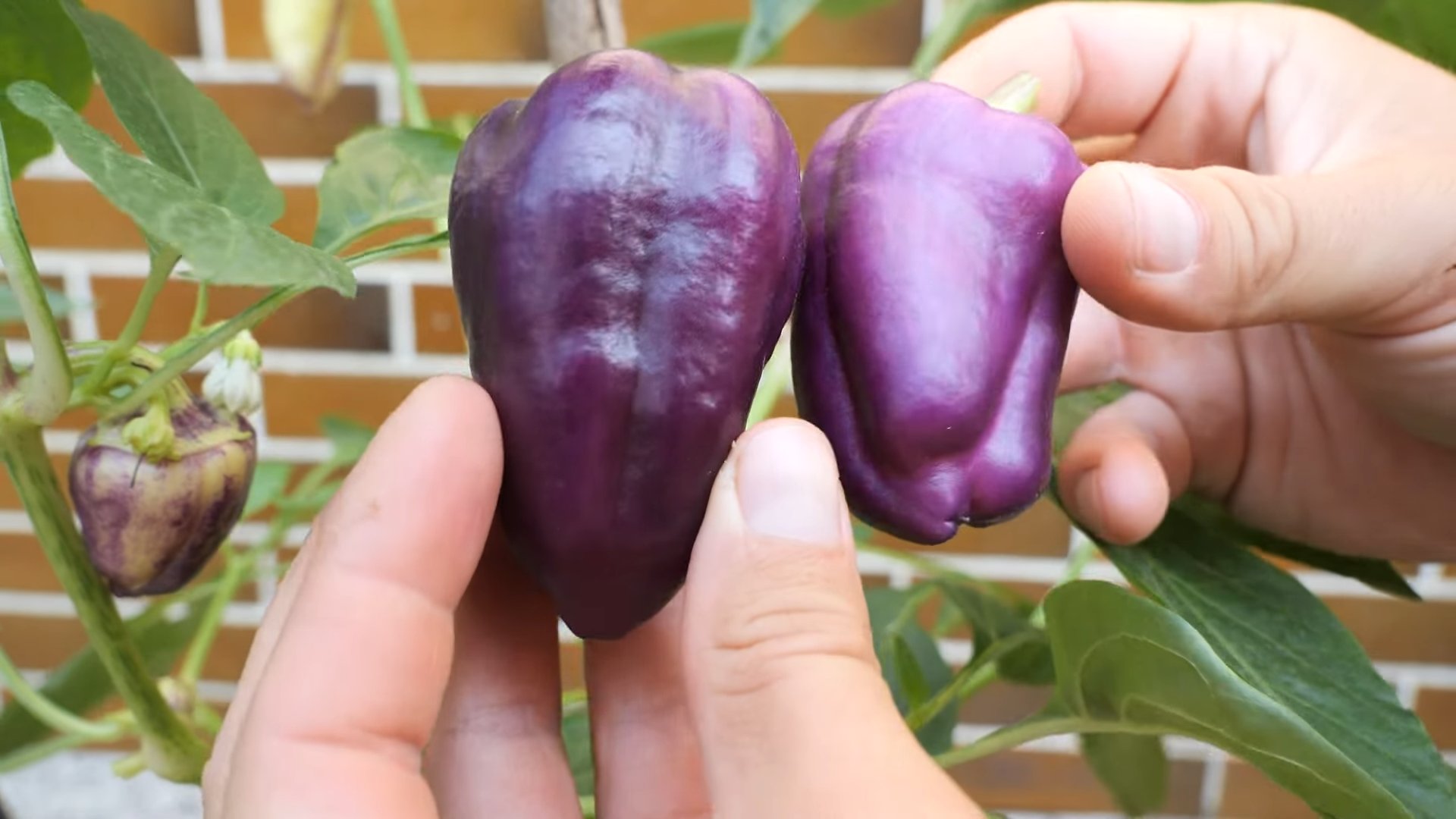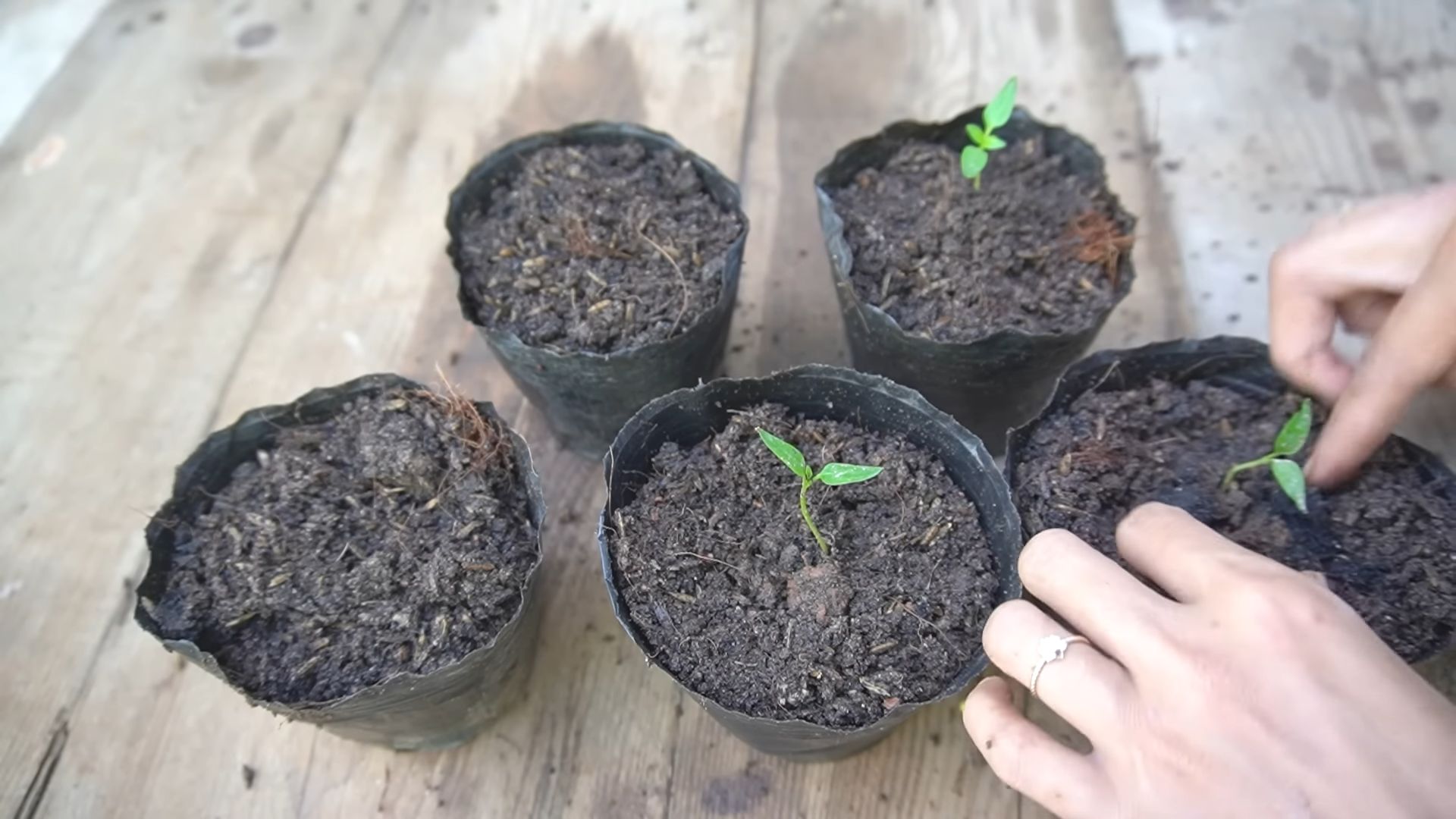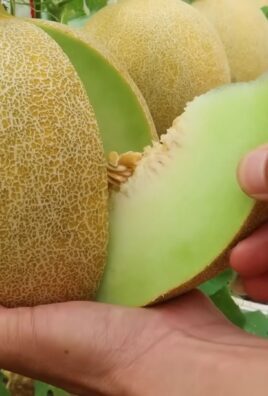Purple Sweet Pepper Growing: Ever dreamt of adding a vibrant splash of color and a burst of sweetness to your garden and your plate? I know I have! Forget those bland, store-bought peppers; imagine harvesting your own gorgeous, deep purple sweet peppers right from your backyard. This isn’t just about growing vegetables; it’s about creating a living work of art, a testament to your green thumb, and a delicious addition to your meals.
While peppers, in general, have a rich history dating back thousands of years in South America, the cultivation of purple varieties is a more recent, delightful development. They represent a fusion of traditional gardening with modern breeding techniques, resulting in a pepper that’s as visually stunning as it is flavorful. Think of it as nature’s way of saying, “Let’s add some pizzazz to the vegetable patch!”
But why should *you* embark on this purple pepper adventure? Well, besides the obvious aesthetic appeal, purple sweet pepper growing offers a unique opportunity to control the quality and freshness of your produce. No more worrying about pesticides or long transportation times! Plus, these peppers are packed with antioxidants, making them a healthy and delicious choice. I’m going to share some simple, yet effective DIY tricks and hacks that will transform even the most novice gardener into a purple pepper pro. Get ready to unlock the secrets to a bountiful harvest of these beautiful and tasty gems!

Growing Vibrant Purple Sweet Peppers: A DIY Guide
Hey there, fellow gardening enthusiasts! I’m so excited to share my experience and tips on growing beautiful, delicious purple sweet peppers right in your own backyard (or balcony!). These peppers are not only visually stunning, adding a pop of color to your garden and your plate, but they also boast a fantastic flavor that’s slightly sweeter than their green or red counterparts. Let’s dive into the process, step-by-step, so you can enjoy a bountiful harvest of these unique peppers.
Choosing the Right Variety and Starting Seeds
Before we get our hands dirty, let’s talk about selecting the right purple sweet pepper variety. There are a few popular options, each with its own unique characteristics:
* ‘Purple Beauty’: This is a classic choice, known for its reliable yields and blocky, bell-shaped peppers that mature to a deep, glossy purple.
* ‘Purple Star’: A slightly smaller variety, ‘Purple Star’ produces abundant, cone-shaped peppers with a vibrant purple hue.
* ‘Sweet Purple’: As the name suggests, this variety is exceptionally sweet and flavorful, perfect for snacking or adding to salads.
Once you’ve chosen your variety, it’s time to start the seeds. I prefer to start my pepper seeds indoors, about 6-8 weeks before the last expected frost. This gives them a head start and ensures a longer growing season.
Step-by-Step Seed Starting:
1. Gather Your Supplies: You’ll need seed starting trays or small pots, a seed starting mix (I recommend a peat-based mix or a coconut coir blend), a spray bottle, a heat mat (optional, but helpful), and a grow light (also optional, but highly recommended).
2. Prepare the Seed Starting Mix: Moisten the seed starting mix with water until it’s damp but not soggy. You want it to hold together when you squeeze it, but not drip water.
3. Fill the Trays or Pots: Fill your seed starting trays or pots with the moistened seed starting mix, leaving about half an inch of space at the top.
4. Sow the Seeds: Make a small indentation (about 录 inch deep) in the center of each cell or pot. Place 2-3 seeds in each indentation. This increases the chances of at least one seed germinating.
5. Cover the Seeds: Gently cover the seeds with a thin layer of seed starting mix.
6. Water Gently: Use a spray bottle to lightly mist the surface of the soil. Avoid overwatering, as this can cause the seeds to rot.
7. Provide Warmth: Place the seed starting trays or pots on a heat mat, if using. The ideal soil temperature for pepper seed germination is between 75-85掳F (24-29掳C).
8. Provide Light: Place the seed starting trays or pots under a grow light, if using. If you don’t have a grow light, place them in a sunny window that receives at least 6 hours of direct sunlight per day.
9. Maintain Moisture: Keep the seed starting mix consistently moist, but not soggy. Check the moisture level daily and mist with water as needed.
10. Wait for Germination: Pepper seeds can take anywhere from 7-21 days to germinate, depending on the variety and growing conditions. Be patient!
11. Thin the Seedlings: Once the seedlings have emerged and have developed their first true leaves (the second set of leaves that appear after the initial seed leaves), thin them to one seedling per cell or pot. Choose the strongest, healthiest-looking seedling and snip off the others at the soil line.
Preparing the Garden Bed or Containers
While your pepper seedlings are growing indoors, it’s time to prepare the garden bed or containers where they’ll eventually be transplanted. Purple sweet peppers thrive in well-drained soil that’s rich in organic matter.
Preparing the Garden Bed:
1. Choose a Sunny Location: Select a spot in your garden that receives at least 6-8 hours of direct sunlight per day.
2. Amend the Soil: Dig in plenty of compost, aged manure, or other organic matter to improve soil drainage and fertility. I like to add a balanced organic fertilizer as well.
3. Check the Soil pH: Purple sweet peppers prefer a slightly acidic soil pH of around 6.0-6.8. You can test your soil pH with a soil testing kit and amend it accordingly. If your soil is too alkaline, you can add sulfur to lower the pH. If it’s too acidic, you can add lime to raise the pH.
4. Create Raised Beds (Optional): Raised beds can improve drainage and warm up the soil more quickly in the spring.
Preparing Containers:
1. Choose the Right Size Container: Select containers that are at least 12 inches in diameter and 12 inches deep. This will provide enough room for the pepper plants to grow and develop a strong root system.
2. Use a High-Quality Potting Mix: Avoid using garden soil in containers, as it can become compacted and poorly drained. Use a high-quality potting mix that’s specifically formulated for container gardening.
3. Ensure Good Drainage: Make sure the containers have drainage holes to prevent waterlogging.
Transplanting the Seedlings
Once the danger of frost has passed and the soil has warmed up, it’s time to transplant your pepper seedlings into the garden or containers.
Step-by-Step Transplanting:
1. Harden Off the Seedlings: Before transplanting, you’ll need to harden off the seedlings to acclimate them to outdoor conditions. This involves gradually exposing them to sunlight, wind, and cooler temperatures over a period of 7-10 days. Start by placing them outdoors in a sheltered location for a few hours each day, gradually increasing the amount of time they spend outdoors.
2. Choose a Cloudy Day: Transplanting on a cloudy day will help reduce stress on the seedlings.
3. Dig Holes: Dig holes in the garden bed or containers that are slightly larger than the root balls of the seedlings. Space the holes about 18-24 inches apart.
4. Remove the Seedlings from the Trays or Pots: Gently remove the seedlings from the seed starting trays or pots, being careful not to damage the roots.
5. Plant the Seedlings: Place the seedlings in the holes and backfill with soil, gently firming it around the base of the plants.
6. Water Thoroughly: Water the seedlings thoroughly after transplanting.
7. Add Mulch: Apply a layer of mulch around the base of the plants to help retain moisture, suppress weeds, and regulate soil temperature. I like to use straw, wood chips, or shredded leaves.
8. Provide Support (Optional): If you’re growing taller varieties of purple sweet peppers, you may want to provide support with stakes or cages to prevent the plants from toppling over.
Caring for Your Purple Sweet Pepper Plants
Now that your pepper plants are in the ground, it’s important to provide them with the care they need to thrive.
Watering:
Water your pepper plants regularly, especially during hot, dry weather. Aim to keep the soil consistently moist, but not soggy. Water deeply and less frequently, rather than shallowly and more often.
Fertilizing:
Feed your pepper plants with a balanced organic fertilizer every 2-3 weeks. You can also use a liquid fertilizer diluted according to the package instructions. Avoid over-fertilizing, as this can lead to excessive foliage growth and reduced fruit production.
Pruning:
Pruning is not essential for purple sweet peppers, but it can help improve air circulation and sunlight penetration, which can lead to healthier plants and better fruit production. You can prune away any suckers (small shoots that grow from the base of the plant) or any yellowing or diseased leaves.
Pest and Disease Control:
Keep an eye out for common pepper pests, such as aphids, flea beetles, and pepper weevils. You can control these pests with insecticidal soap, neem oil, or other organic pest control methods. Also, watch out for diseases like blossom-end rot, which is caused by calcium deficiency. You can prevent blossom-end rot by ensuring that your soil is well-drained and that your plants receive adequate calcium. Adding crushed eggshells to the soil can help.
Harvesting Your Purple Sweet Peppers
The moment you’ve been waiting for! Purple sweet peppers are typically ready to harvest about 60-80 days after transplanting, depending on the variety.
When to Harvest:
Harvest your peppers when they’ve reached their mature size and color. The peppers should be firm and glossy. The deeper the purple, the riper the pepper.
How to Harvest:
Use a sharp knife or pruning shears to cut the peppers from the plant, leaving a short stem attached.
Storing Your Harvest:
Store

Conclusion
So, there you have it! Growing your own purple sweet peppers isn’t just a gardening project; it’s an investment in flavor, color, and a healthier lifestyle. We’ve walked through the essential steps, from selecting the right seeds and nurturing seedlings to transplanting, providing optimal care, and finally, harvesting those vibrant, delicious peppers.
Why is this DIY trick a must-try? Because store-bought peppers, while convenient, often lack the intense flavor and freshness of homegrown varieties. Plus, you have complete control over the growing process, ensuring your peppers are free from harmful pesticides and herbicides. Imagine the satisfaction of serving a dish featuring peppers you nurtured from seed to table! The vibrant purple hue also adds a unique visual appeal to your meals, making them even more enticing.
But the benefits extend beyond taste and aesthetics. Growing your own purple sweet peppers is a rewarding and therapeutic experience. It connects you with nature, reduces stress, and provides a sense of accomplishment. It’s also a fantastic way to teach children about where their food comes from and the importance of sustainable practices.
Looking for variations? Consider experimenting with different growing methods. Hydroponics can be a great option for those with limited space, while container gardening allows you to move your plants around to optimize sunlight exposure. You can also try companion planting, pairing your purple sweet peppers with herbs like basil or rosemary to deter pests and enhance flavor. For a spicier kick, try grafting a purple sweet pepper onto a hot pepper plant rootstock. This can result in a unique pepper with a sweet flavor and a subtle heat.
Don’t be afraid to get creative with your harvest! Purple sweet peppers are incredibly versatile. They’re delicious raw in salads, grilled as a side dish, stuffed with rice and vegetables, or roasted to bring out their natural sweetness. You can even pickle them for a tangy treat or dehydrate them for long-term storage.
We wholeheartedly encourage you to embark on this exciting gardening adventure. Growing your own purple sweet peppers is easier than you might think, and the rewards are well worth the effort. Start small, be patient, and don’t be afraid to experiment.
And most importantly, we want to hear about your experience! Share your tips, tricks, and photos with us in the comments below. Let’s create a community of purple sweet pepper enthusiasts and inspire others to grow their own food. What challenges did you face? What successes did you celebrate? What unique recipes did you create? Your insights will be invaluable to fellow gardeners. Happy growing!
Frequently Asked Questions (FAQ)
What is the best time to start purple sweet pepper seeds indoors?
Ideally, you should start your purple sweet pepper seeds indoors about 6-8 weeks before the last expected frost in your area. This gives the seedlings enough time to develop a strong root system before being transplanted outdoors. Check your local weather forecasts and gardening resources to determine the average last frost date for your region. Starting seeds too early can result in leggy, weak seedlings, while starting too late may delay your harvest.
How much sunlight do purple sweet pepper plants need?
Purple sweet pepper plants thrive in full sun, requiring at least 6-8 hours of direct sunlight per day. Insufficient sunlight can lead to stunted growth, reduced fruit production, and pale-colored peppers. If you’re growing your peppers indoors, supplement natural sunlight with grow lights to ensure they receive adequate illumination. When transplanting outdoors, choose a location that receives plenty of sunlight throughout the day.
What type of soil is best for growing purple sweet peppers?
Purple sweet peppers prefer well-draining, fertile soil with a slightly acidic to neutral pH (around 6.0-7.0). Amend your garden soil with compost or other organic matter to improve drainage, aeration, and nutrient content. Avoid heavy clay soils, as they can become waterlogged and hinder root development. If you’re growing in containers, use a high-quality potting mix specifically formulated for vegetables.
How often should I water my purple sweet pepper plants?
Water your purple sweet pepper plants regularly, especially during hot, dry weather. Aim to keep the soil consistently moist but not waterlogged. Water deeply at the base of the plant, avoiding wetting the foliage, which can increase the risk of fungal diseases. Check the soil moisture level regularly by inserting your finger into the soil. If the top inch feels dry, it’s time to water. Mulching around the plants can help retain moisture and suppress weeds.
What are some common pests and diseases that affect purple sweet pepper plants?
Common pests that can affect purple sweet pepper plants include aphids, spider mites, whiteflies, and pepper weevils. Regularly inspect your plants for signs of infestation and take appropriate action, such as using insecticidal soap or neem oil. Common diseases include blossom-end rot, fungal leaf spots, and viral diseases. Ensure good air circulation around your plants, avoid overhead watering, and use disease-resistant varieties to minimize the risk of disease.
How do I prevent blossom-end rot in my purple sweet peppers?
Blossom-end rot is a common problem in peppers, caused by a calcium deficiency in the developing fruit. To prevent blossom-end rot, ensure your soil is rich in calcium and maintain consistent watering. Avoid allowing the soil to dry out completely, as this can hinder calcium uptake. You can also add calcium supplements to the soil or use a foliar spray containing calcium.
When are purple sweet peppers ready to harvest?
Purple sweet peppers are typically ready to harvest when they reach their mature size and have developed a deep, vibrant purple color. The peppers should feel firm and slightly glossy. You can also harvest them when they are still green, but they will be less sweet and flavorful. Use pruning shears or a sharp knife to cut the peppers from the plant, leaving a small stem attached.
Can I save seeds from my purple sweet peppers for next year?
Yes, you can save seeds from your purple sweet peppers, but keep in mind that if your plants were cross-pollinated with other pepper varieties, the seeds may not produce true-to-type plants. To save seeds, allow the peppers to fully ripen on the plant until they are soft and slightly wrinkled. Remove the seeds from the pepper and spread them out on a paper towel to dry completely. Store the dried seeds in an airtight container in a cool, dark place.
How can I encourage more fruit production on my purple sweet pepper plants?
To encourage more fruit production, fertilize your purple sweet pepper plants regularly with a balanced fertilizer or a fertilizer specifically formulated for vegetables. Prune away any suckers (small shoots that grow from the base of the plant) to encourage more energy to be directed towards fruit production. Hand-pollinating the flowers can also increase fruit set, especially in areas with limited pollinator activity.
Are purple sweet peppers hotter than other sweet peppers?
No, purple sweet peppers are not typically hotter than other sweet peppers. They are generally mild and sweet in flavor, similar to other bell pepper varieties. The purple color is due to the presence of anthocyanins, which are antioxidants that also contribute to the pepper’s nutritional value. However, as mentioned earlier, grafting can change the heat level.




Leave a Comment